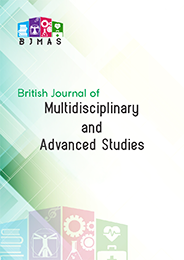Assessment of Temporal Variation of Wind Speed as an Indicator of Intensity Wind Erosion in Northern State, Sudan
DOI:
https://doi.org/10.37745/bjmas.2022.0163Abstract
The study was conducted in the Northern State, which is severely affected by wind erosion. It is located between longitudes 30˚ 15' - 32˚ 00' east and latitudes 17˚ 45' - 19˚ 15' north, there are three meteorological stations in the State, Wadi Halfa, Dongolla and Karima. The area of the State is approximately 348697km2. Daily observations of wind speeds data during the two periods 2001-2003 and 2011-2013 were collected for meteorological station of Karima in the Northern State. Erosive Winds (EWS) are speed of winds causing erosion (V ≥5.0 m/sec) estimated from the total wind speed. The study aimed to estimate and determine the ability of EWS from the total winds, comparison of wind speeds in different seasons (months +years), and generating correlation between total winds and EWS for the two studied periods. The SPSS program was used for statistical analysis. The results showed that the wind speed varies greatly in frequency and speed during each month and year, even within the same climatic season. In two periods the variation (CV%) due to annual was much lower than the monthly due to the higher monthly variability of wind speed, accounted about 1.6 and 1.9 folds for the first and second periods respectively. Furthermore, the total mean of EWS for the second period is 1.2 times greater than the first period. In the second period (2011-2013), the mean EWS ranged between 19.5 (November) and 45.6, 45.1 (February and March respectively), with a mean of 30.8 m/sec, a standard deviation (STD) of 9.7, and a (CV) of 31.7%. The results of the regression analysis between the total winds and the EWS for the two periods showed strong correlation with a high, direct and significant relationship (p< 0.001,R =0.971) and (p<0.001,R=0.978) for the first and second periods respectively. The total winds contributed by 94.2% and 95.6% of the wind variability of WES for the first and second periods respectively. In the study area, the climatic conditions are suitable for generating energy from solar radiation and wind.
Downloads
Downloads
Published
Versions
- 19-04-2023 (2)
- 19-04-2023 (1)












